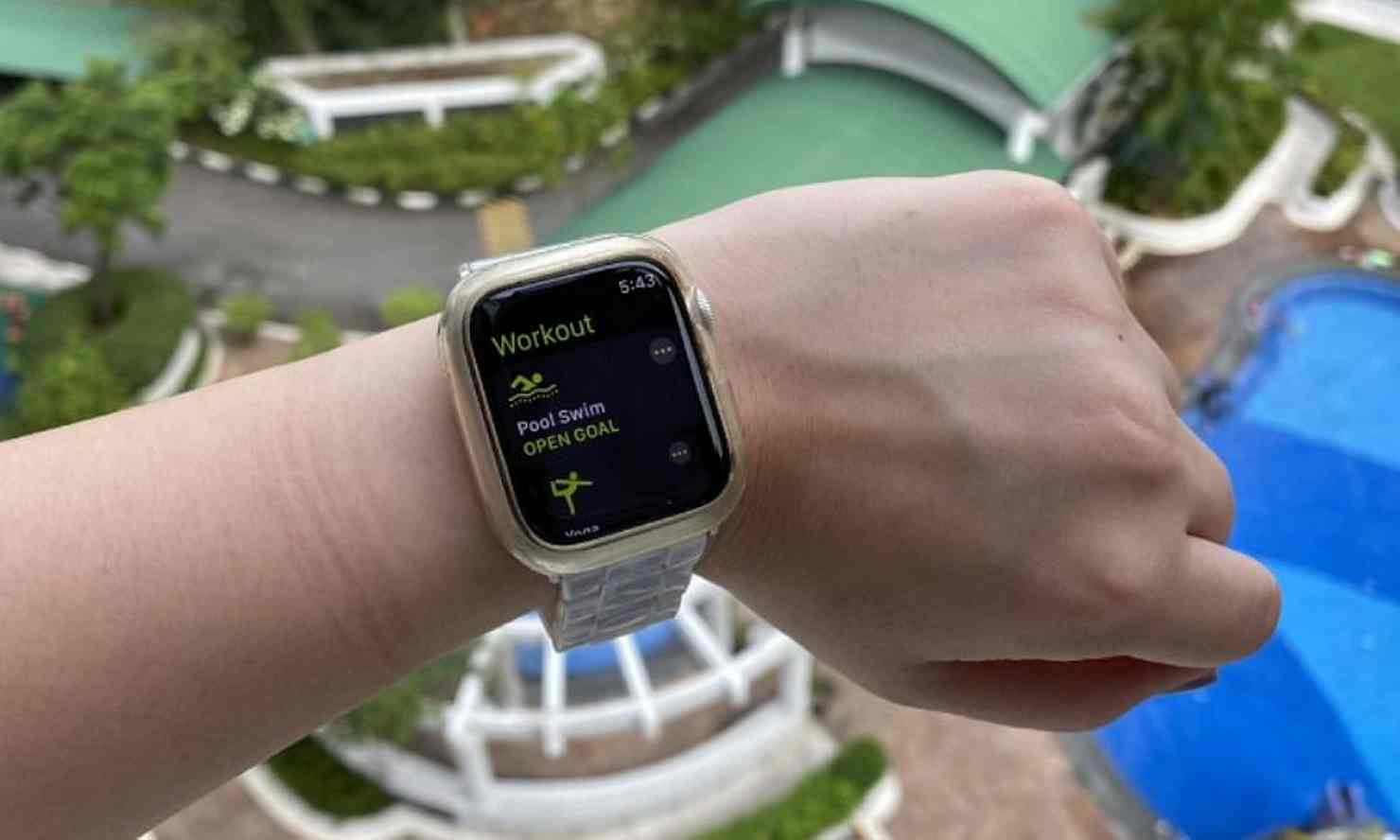
In easiest phrases, the “afterburn impact” basically means the energy you proceed to burn after exercising. Whereas many individuals primarily take note of the quantity of energy they burn whereas working, biking, swimming or lifting weights, there’s a complete different necessary element to calorie-burning that you just may be overlooking.
That’s as a result of our our bodies really expend additional power (energy) after sure exercises to assist us recuperate, quiet down and take care of the hormonal adjustments that the train produced. The scientific identify for this course of is extra post-exercise oxygen consumption.
What does the analysis we now have accessible relating to advantages of the afterburn impact imply for the way forward for your exercises? Should you correctly plan your train routine so that you do the proper forms of high-intensity exercises a number of occasions per week, you’ll achieve the skill to burn extra fats in much less time.
Sound too good to be true? Right here’s what this phenomenon is all about …
What Is the Afterburn Impact?
The important thing to growing the afterburn results of your exercises, so you possibly can burn extra energy all through the entire day, is practising high-intensity workouts. That’s as a result of the afterburn impact is small following steady-state conventional cardio exercises like jogging however is considerably greater following intense exercises — like sprinting, circuit, energy and burst actions.
In case your objectives are to get leaner, construct muscle quick, enhance your cardiovascular well being and never spend a great deal of time needing to train, then the underside line is that doing temporary, however intense, intermittent bouts of train is the way in which to go. The advantages of high-intensity interval coaching — generally known as HIIT — are better energy, improved pace and higher fats burning, all in ways in which steady-state cardio exercises merely can’t comparably create.
Basically, the extra intense the train, the better the afterburn impact goes to be. Which means that a exercise that’s 20 minutes lengthy involving sprinting (or practising one other type of burst coaching or intense exercise) as quick as you possibly can for 30 seconds, repeated for 10 rounds with 90-second relaxation durations in between, may have a better afterburn impact in comparison with doing steady-state workouts like working reasonably for half-hour.
What number of extra energy will the afterburn impact burn by following intense train? It’s arduous to estimate a precise quantity since each individual reacts to high-intensity train in another way. Components like somebody’s present stage of health, gender, age, coaching length and depth can doubtlessly affect the magnitude of the afterburn.
That being mentioned, one research revealed within the Journal of Train Science confirmed that the afterburn impact is related to an elevation in metabolism as a result of thermic impact of exercise no matter your present health stage — and a few consultants consider that this may trigger round a ten % enhance in calorie expenditure for the day following simply 20 minutes of high-intensity train.
In different phrases, in the event you’re an energetic lady who usually burns 2,000 energy a day, taking into consideration your extra power necessities would possibly imply you’re now burning 2,200!
Right here’s the scientific breakdown of the afterburn impact:
HIIT exercises enhance your metabolism — in different phrases, they increase your whole power expenditure, which is the quantity of energy your physique burns for power every day.
You’ll be able to consider power expenditure as the quantity of power an individual makes use of up all through the whole day performing all bodily actions, whether or not it’s strolling round, showering or bending over. All of us expend power within the type of energy each time we breathe, transfer, digest meals and our coronary heart pumps out blood — so most of our power expenditure goes with out us even noticing or making an effort.
With regards to train, after all, we do take discover of our elevated effort and, subsequently, the upper quantity of power we’re utilizing. However the power expenditure of a exercise is the whole measure of energy burned throughout and after train, so whereas we may be pushing ourselves on the fitness center and “feeling the burn,” we really proceed to make use of additional power as soon as the exercise is over with out even realizing it.
As you’re studying, sure types of train (high-intensity) dial up the power burn following train higher than others. After intense train, your physique has to work twice as arduous to replenish its oxygen shops than it does after steady-state train.
The technical identify for energy burned after train is “extra post-exercise oxygen consumption,” or EPOC. Proof suggests an exponential relationship between train depth and the magnitude of the EPOC.
The time period EPOC describes the truth that at greater train intensities, oxygen uptake isn’t proportional to warmth expenditure. In different phrases, EPOC leads to an oxygen debt as a result of that is how the physique works to recuperate after a troublesome exercise and brings the organs, coronary heart and hormones again to a resting state.
The oxygen debt element is a part of the rationale there’s an afterburn impact as a result of it takes a toll on power use. Actually, this technique of bringing the physique again to homeostasis and normalizing metabolism following intense exercise would possibly take as much as three days!
The extra typically you do intense exercises, the extra it pays off. The Worldwide Journal of Sports activities Diet and Train Metabolism stories that EPOC varies as a operate of metabolic stress, and extra coaching improves the effectivity of metabolic regulation throughout restoration from train.
EPOC is just not the one factor that accounts for the afterburn impact. Different elements need to do with physique’s manufacturing of lactic acid and the method of hypertrophy, or the constructing of muscle mass.
Consider it this manner: Should you’re sporting your muscle mass out and producing greater ranges of lactic acid (the chemical response that’s chargeable for the “burn” you are feeling when your muscle mass are fatigued), then you definately’re inflicting harm to muscle tissue on the microscopic stage that must be repaired. This takes power as a result of it entails the physique breaking down amino acids (proteins) in muscle mass after which rebuilding them.
Within the course of, intense train additionally will increase testosterone naturally, which might imply extra muscle achieve.
This technique of laying down new proteins with a view to construct again muscle mass stronger and greater raises your whole power expenditure — and principally all of this occurs after you end figuring out.
Activate the Afterburn Impact
For years, we’ve been led to consider that exercising for longer durations of time leads to extra energy burned and, subsequently, a greater physique composition. Lately, the thought which you could attain your objectives by following an train routine that’s really the other is now well-supported by a rising area of analysis.
A 2011 report revealed within the Journal of Weight problems states that though typically the results of standard cardio train on physique fats is negligible, intense types of train might have a better impression on physique composition. “Rising analysis analyzing high-intensity intermittent train (HIIE) signifies that it could be simpler at lowering subcutaneous and belly physique fats than different forms of train.”
Throughout cardio train, the muscle mass use glucose (sugar) primarily for power. Then again, in the course of the longer restoration interval described above, the physique primarily makes use of fatty acids along with glucose. This interprets into you burning extra fats whilst you construct extra muscle.
That’s necessary as a result of, even at relaxation, muscle burns extra energy than saved physique fats does.
How a lot intense train do you could do? This relies on how intense your exercises are.
For instance, the World Well being Group has switched away from merely recommending steady-state train and now advises the next:
Adults aged 18–64 years
- ought to do no less than 150–300 minutes of moderate-intensity cardio bodily exercise;
- or no less than 75–150 minutes of vigorous-intensity cardio bodily exercise; or an equal mixture of moderate- and vigorous-intensity exercise all through the week
- also needs to do muscle-strengthening actions at reasonable or better depth that contain all main muscle teams on 2 or extra days per week, as these present extra well being advantages.
- might enhance moderate-intensity cardio bodily exercise to greater than 300 minutes; or do greater than 150 minutes of vigorous-intensity cardio bodily exercise; or an equal mixture of moderate- and vigorous-intensity exercise all through the week for extra well being advantages.
- ought to restrict the period of time spent being sedentary. Changing sedentary time with bodily exercise of any depth (together with gentle depth) offers well being advantages, and
- to assist cut back the detrimental results of excessive ranges of sedentary behaviour on well being, all adults and older adults ought to goal to do greater than the advisable ranges of moderate- to vigorous-intensity bodily exercise
Listed here are 3 ways to follow high-intensity train with a view to dial up your afterburn impact:
1. Biking, Utilizing the Elliptical or Rowing
As an alternative of doing steady-state cardio for 50 minutes, halve this quantity, and use interval coaching.
Excessive-intensity interval coaching combines quick, high-intensity bursts of train with sluggish, restoration phases. These intervals are repeated all through one quick (15- to 20-minute) session.
The extreme elements are carried out at 85 %–100% most coronary heart fee, relatively than 50 %–70 % that’s the common reasonable endurance exercise stage.
A easy approach to follow HIIT is to push your self as arduous as you possibly can for about 20–30 seconds, then take a remainder of about 60 seconds. Repeat this cycle at some stage in your train.
The shorter your relaxation interval is, the tougher will probably be. You must really feel worn out afterward!
2. Weight Lifting or Resistance Coaching
Apply a circuit-style exercise or full “supersets.” Supersets are whenever you go from one weighted train straight into the subsequent, with out resting in between. You’re employed one muscle group arduous till it’s fatigued, then transfer on to a different one proper afterward.
In different phrases, you employ reverse muscle teams so whilst you relaxation one, you prepare the opposite. For instance, you would possibly begin with squats working your legs primarily, then transfer on to bench presses working your higher physique primarily. Otherwise you go from again rows to chest presses.
Additionally, to radically swap up your routine, give HIIT a attempt by incorporating some full-body kettlebell exercises, or do CrossFit exercises.
3. Sprinting
That is probably the preferred approach to follow HIIT and obtain excessive afterburn results. This mannequin follows the identical thought as that for biking or rowing talked about above — you swap an extended regular exercise for a shorter however intense one.
And I imply intense!
Throughout your sprints, you actually need to push your self, virtually such as you’re working as a result of your life relies on it. Attempt sprinting for 10–quarter-hour whole to begin, utilizing 90-second intervals. This implies pushing your self very arduous for 30 seconds, then taking a relaxation for one minute.
Repeat the cycle till you’re at about quarter-hour or barely extra when you’ve been practising HIIT for some time. You’ll be able to follow this outdoor or take it inside for an intense burst-training exercise on a treadmill.
Associated: Do Health Trackers Assist You Change into Extra Lively?
Precautions
There’s nonetheless lots to be taught in regards to the afterburn impact and the way precisely it really works. Virtually each side of a exercise — from the variety of reps and units accomplished, variety of relaxation durations in between units, depth, pace, forms of actions carried out, and an individual’s coronary heart fee — can all impression how dramatic the afterburn impact seems to be.
It seems that well-trained people have a extra fast return of post-exercise metabolism to resting ranges after exercising. Subsequently, they may be getting essentially the most bang for his or her buck with regards to HIIT exercises.
Nonetheless, there are many advantages for individuals new to train, too, assuming they begin sluggish and forestall accidents. One of many greatest challenges may be encouraging HIIT newbies and people who have weight to lose to even begin intense train packages that may increase their afterburn impact, since depth could be intimidating.
Should you’re practising HIIT for the primary time, hold your exercises shorter, round 10 minutes, and use a way that you just’re snug with, like working (on grass or a treadmill) or biking.
No matter how fit your needs already are, HIIT exercises shouldn’t be carried out on daily basis as a result of this may enhance harm threat. They’re finest when accomplished simply two to a few occasions per week (and even much less in some circumstances).
Should you select to do a circuit-style intense exercise or one utilizing weights, contemplate beginning with an expert coach to verify your type is appropriate and also you aren’t setting your self up for harm.
Associated: How Lengthy Ought to You Relaxation Between Exercises?





